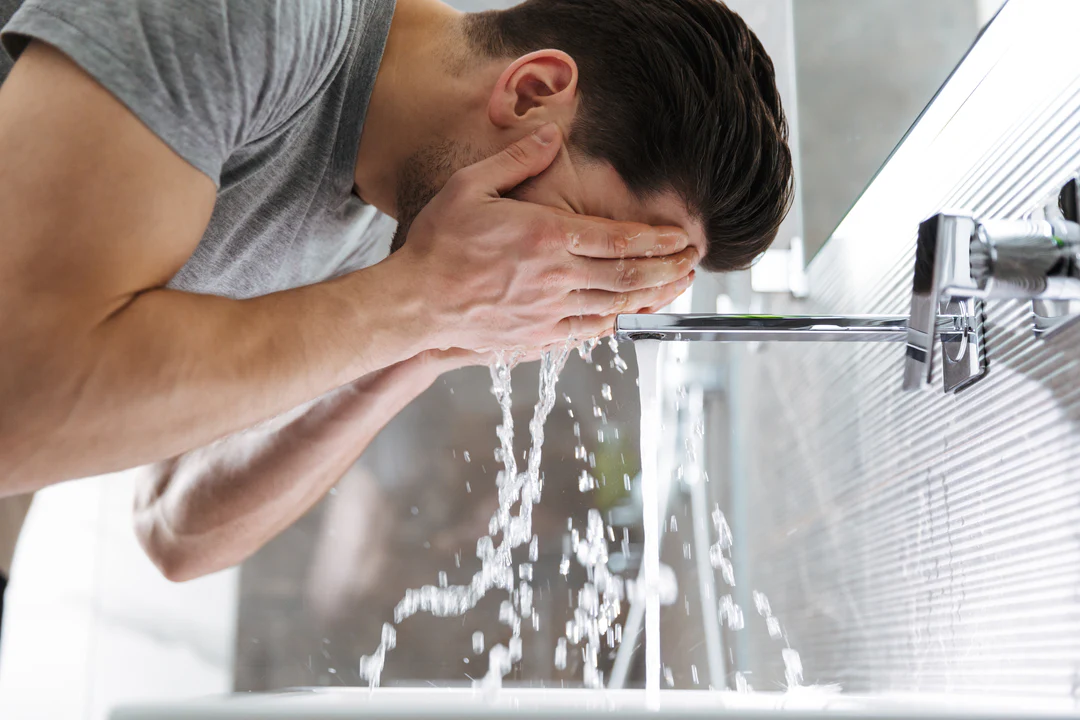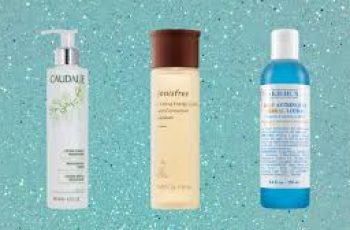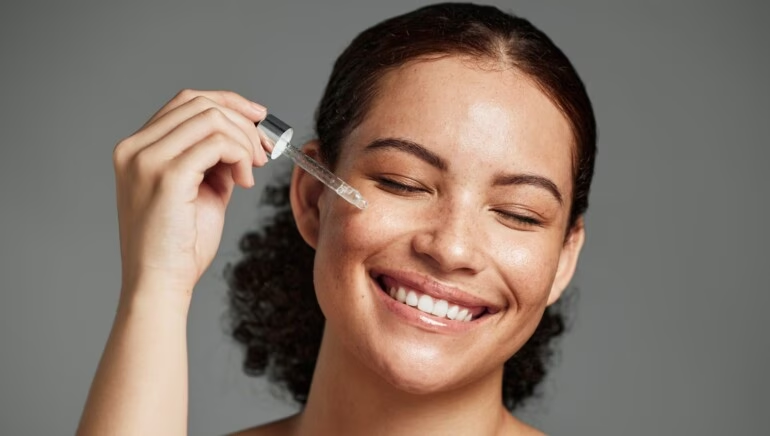
Can I use Vitamin E with Hyaluronic Acid?
Hyaluronic acid and vitamin E are highly effective skincare ingredients that offer a variety of benefits. When it comes to combining ingredients together, people often think that some ingredients are a recipe for disaster, while others complement each other. Hyaluronic acid and vitamin E fall into the latter category. So, with that in mind, let’s explore how to combine vitamin E with hyaluronic acid.
Before we dive in, though, let’s briefly review these two powerful ingredients and their effects on the skin.
What are the benefits of hyaluronic acid for skin?
Known for its unique ability to bind water and retain moisture in the skin.
Hyaluronic acid molecules can bind up to 1,000 times their own weight in water.
Ensures that the skin’s natural protective barrier is fully functional and can fight free radicals or other environmental influences.
Reduces the appearance of fine lines and wrinkles, leaving skin looking smoother and plumper.
Removes signs of fatigue by boosting hydration, leaving skin looking fresh and energized.
Helps tighten the skin, making pores less noticeable.
Makes sure the skin is well hydrated and able to absorb any skincare products applied to the lower skin area.
Leaves skin feeling softer and smoother, making makeup last longer and easier to apply.
What are the benefits of vitamin E for skin?
It is rich in antioxidants, which fight any signs of free radicals and other environmental aggressors.
Helps reduce UV damage such as dark spots, pigmentation and uneven skin tone.
Provides nutrients to the surface of the skin, keeping it plump and healthy.
Highly hydrating, helps combat severely dry areas of the skin, from the elbows to the cuticles.
Absorbs quickly into the skin, keeping it hydrated and able to absorb any other skincare products applied to the face.
Can be taken as a supplement or through a topical skincare product such as a cream or serum.
Reduces the appearance of scars and wounds and prevents the formation of new ones.
Can vitamin E be used with hyaluronic acid?
It is actually possible, and the two skincare ingredients can work together with little to no side effects. The hydrating properties of hyaluronic acid keep the skin barrier plump and hydrated, while vitamin E nourishes the skin, keeping it moisturized, balanced, and at its healthiest.
How you choose to layer them depends on the product formula, as it is always considered best to apply products from thinnest to thickest consistency. Start with cleanser, toner, serum, face oil, and moisturizer. This is a basic skincare rule when incorporating layered products into your routine. This ensures that the products are properly absorbed into the skin without having to compete with the physical barrier created by thicker skincare products.
What does hyaluronic acid work best with?
The beauty of hyaluronic acid is that it works impressively both on its own and in combination with other potent skin ingredients. It is one of the few skincare ingredients that works well with other formulas and ingredients, like lactic acid, niacinamide, retinol, and vitamin C. As with all skincare ingredients, I recommend doing a 24-hour patch test before applying the product to your entire face to prevent any unwanted irritation or allergic reactions.
To get the most out of hyaluronic acid, the molecules in different formulas are of different sizes, which means they can reach the lower layers of the skin. With hyaluronic acid’s hydrating properties, it will constantly draw moisture from the lower layers of the skin and bring it to the surface. This will keep the complexion plump and hydrated, but you may notice that the skin feels “thirstier,” especially if you’ve applied hyaluronic acid on dry skin. Therefore, I recommend making sure the skin is still slightly damp, as hyaluronic acid can lock in every gram of moisture and prevent it from being lost.
Can hyaluronic acid be mixed with vitamins C and E? Yes, you can certainly use hyaluronic acid with vitamins C and E. Incorporating all three into your daily routine will help you reap the benefits of these powerful forces. With this combination, you’ll get a radiant complexion while fighting signs of aging like fine lines and wrinkles. With the antioxidant properties of vitamins C and E, any signs of discoloration, such as dark spots or acne scars, will be significantly reduced. The skin barrier is also strengthened to protect itself from free radicals such as UV rays, pollution, and harsh climates. The best way to combine hyaluronic acid, vitamins C and E is to start your day with a serum rich in vitamin C, followed by hyaluronic acid to lock in moisture. Use a hyaluronic acid serum at night, followed by a vitamin E moisturizer to nourish and repair your skin while you get some well-deserved beauty sleep. Should I use hyaluronic acid before or after retinol? It’s best to use hyaluronic acid after retinol to counteract the drying effects of retinol. Allow about 30 minutes between applications to allow each product to fully absorb into the skin. Ideally, you should use a retinol-rich serum and then a moisturizer containing hyaluronic acid. Not only does this lock moisture into the skin, but the physical barrier created by the moisturizer also provides an extra layer of protection from the elements, free radicals and other aggressive environmental influences. If you’d like to learn more about how to layer hyaluronic acid and retinol, check out our dedicated blog post. Don’t forget to follow us on Instagram for more information about skincare experts, new products and exclusive discount codes.
DQH Can I use salicylic acid first and then vitamin C?
It’s easy to create a skincare routine, but knowing how to use it is another thing entirely. In most cases, if you’re not getting the desired skin results, it could be due to the layering of conflicting ingredients. So, is it possible that salicylic acid and vitamin C are such ingredients? Or are these active ingredients the duo that’s been missing from your skincare routine? If you want answers, stick around because today we are going to explain the benefits of salicylic acid and vitamin C and how they can be used in your daily life.
What are the benefits of salicylic acid for skin?
Salicylic acid is one of the most commonly used beta hydroxy acids and is favored by many people with oily, acne-prone skin. This acid is derived from willow bark, and unlike its water-soluble relatives (called alpha-hydroxy acids), salicylic acid is oil-soluble, which means it can penetrate deeper into the lower layers of the skin. Once it reaches the lower layers, it can help unclog pores of excess sebum, dirt, bacteria, debris, and impurities. This results in clearer skin tones and greater definition.
Not only does salicylic acid benefit the underlying layers, but the outer surface of the skin benefits as well. When applied to the skin, salicylic acid removes the buildup of dead skin cells. This is accomplished by breaking the bonds that hold dead cells to the surface. Over time, this can cause the complexion to look dull and prone to acne, blackheads, and other blemishes.
If you’d like to learn more about salicylic acid and how it can improve your skin, check out this dedicated blog post from a beauty insider.
What are the benefits of vitamin C for skin?
Vitamin C is considered one of the most powerful antioxidants, which means it is very effective at fighting free radicals and preventing them from causing further skin damage. Examples of free radicals include pollution, central heating, UV rays and harsh climate. They attack proteins, fats and cell membranes as soon as they come into contact with the skin, causing signs of premature aging such as fine lines and wrinkles as well as hyperpigmentation, flaky patches of skin and loss of elasticity.
Many people usually prefer to use vitamin C in their morning routine as this ingredient gives the complexion a radiant glow. You’ll also find that vitamin C can target areas of hyperpigmentation, plumping the skin and reducing the appearance of fine lines and wrinkles.
The thing about vitamin C is that there are a lot of outdated studies going back to the 1950s that describe vitamin C as an unstable skin component. Thanks to improvements in modern technology, this is no longer the case as all products now contain a stable form of vitamin C.
Visit The Beauty Insider to learn more about vitamin C. So please check out our blog post.
Can I use salicylic acid first and then vitamin C?
Yes, you absolutely can. In fact, it’s thought that using salicylic acid before using vitamin C ensures it penetrates faster and works faster.
This is an efficient way to utilize two power sources, and the reason has to do with pH. For example, the skin’s natural pH is about 4.7, making it slightly acidic. Salicylic acid and vitamin C are also both acidic, and you’ll find that vitamin C is absorbed quickly into the skin. Therefore, using salicylic acid beforehand can increase the acidity of the skin and allow vitamin C to penetrate into the skin faster.
While this is considered an effective way to combine two powerful ingredients, you need to be aware of your skin type and how it reacts to certain active ingredients. Even people with perfect, normal skin can experience skin sensitivity and irritation. Therefore, always consult a doctor or dermatologist before using any new products on your skin.
It’s also important to follow skin application rules. In this case, you need to use the product correctly to ensure you get the best results for your skin. If you’re not sure what I mean, the basic rule for skin is to start with the thinnest consistency and work your way up to the thickest consistency. This prevents a barrier from forming on the surface, preventing other active ingredients from penetrating the skin.
Can I use salicylic acid at night and vitamin C in the morning?
Yes, absolutely, this is considered the most effective way to get returns without any adverse side effects. This is because there is enough time between applications to ensure that the skin’s pH levels return to balance.
You’ll also find that Vitamin C is rich in antioxidants and is perfect for use in the morning to ensure your skin is protected and looking its healthiest. Due to the small size of salicylic acid molecules, it is an acid that is able to reach the deepest parts of the skin. While this is effective at keeping skin clear, it also increases the risk of irritation and photosensitivity. Therefore, many people prefer to use powerful BHAs in their evening routine without exposure to UV rays, pollution, or harsh weather.
Warning: If you avoid using sunscreen every day, none of these ingredients will do what your skin needs. The combination of chemical peels and powerful ingredients increases the risk of further damage to the skin’s surface. Use SPF 50 every day to keep your skin protected and your lipid barrier healthy, even on cloudy days, keeping your skin in top condition.


